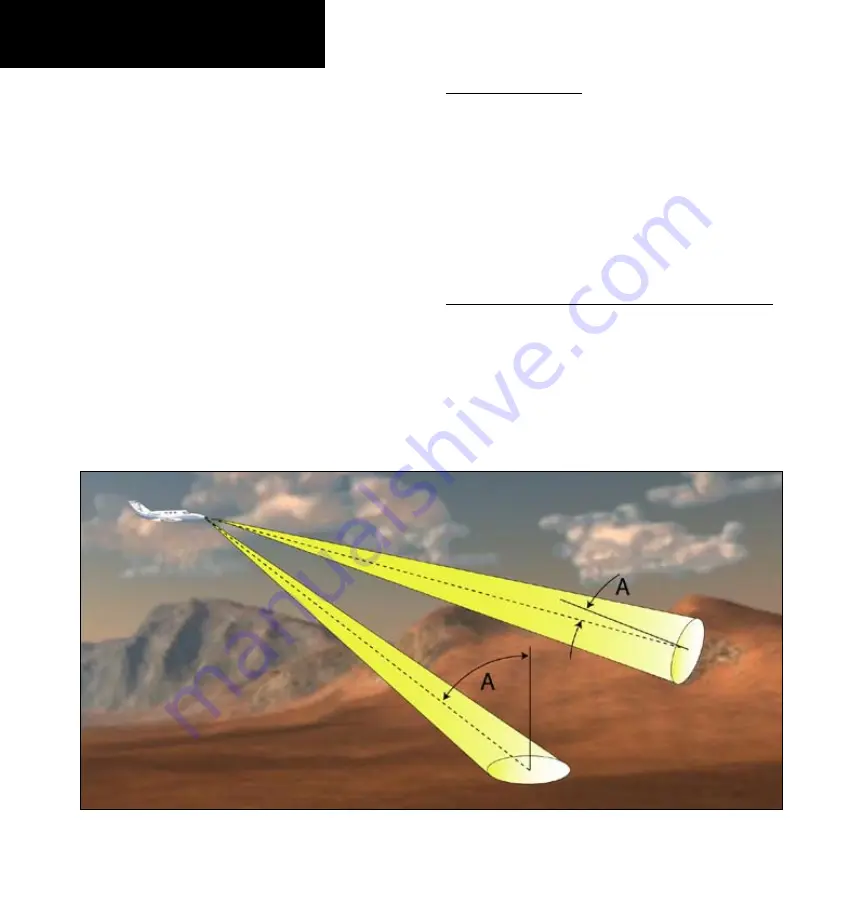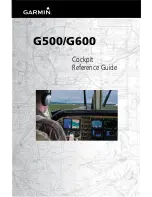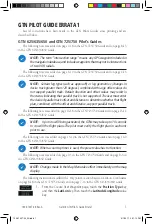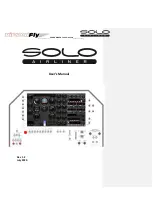
100
190-00607-02 Rev C
Detailed Operation
Angle of Incidence
The angle at which the radar beam strikes the
target is called the Angle of Incidence. Incident angle
(“A”) is illustrated below. This directly affects the
detectable range, the area of illumination, and the
intensity of the displayed target returns. A large inci-
dent angle gives the radar system a smaller detectable
range and lower display intensity due to minimized
reflection of the radar energy.
A smaller incident angle gives the radar a larger
detectable range of operation and the target display
will show a higher intensity. Since more radar energy
is reflected back to the antenna with a low incident
angle, the resulting detectable range is increased for
mountainous terrain.
operating dIStAncE
The following information establishes a minimum
safe distance from the antenna for personnel near an
operating airborne weather radar. The minimum safe
distance is based upon the FCC’s exposure limit at
9.3 to 9.5 GHz for general population/uncontrolled
environments which is 1 mW/cm2. See Advisory
Circular 20-68B for more information on safe distance
determination.
MAXIMuM PErMISSIBLE EXPoSurE LEVEL (MPEL)
The zone in which the radiation level exceeds the
US Government standard of 1 mW/cm2, is the semi-
circular area of at least 10.83 ft from the 12” antenna
as indicated in the illustration below. All personnel
must remain outside of this zone. With a scanning
or rotating beam, the averaged power density at the
MPEL boundary is significantly reduced.
Angle of Incidence
Radar



































